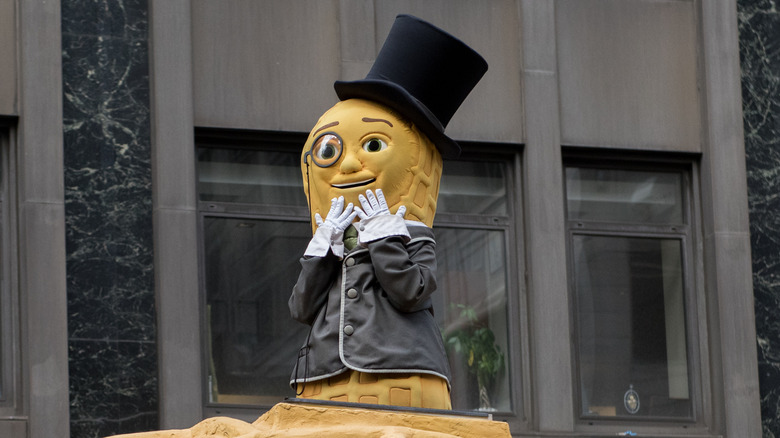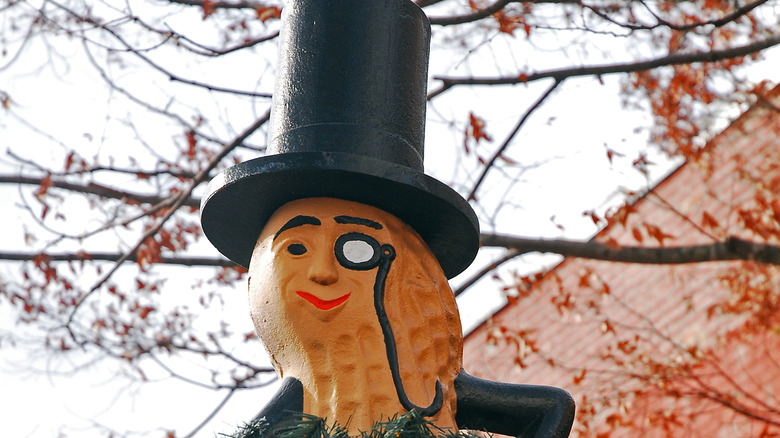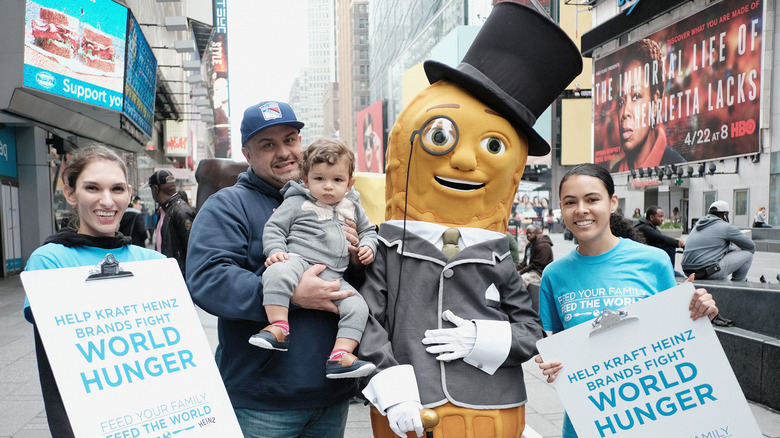How Mr. Peanut Survived The Great Depression
Who is the greatest living American? Who, for as long as this nation can remember, stood beside us when we needed support in those dark days? When the fields turned to miles of dust, the streets filled with the sound of weeping, and down-and-outs with forlorn eyes turned their gazes outward, who was there standing among us hand in hand?
Crafted from a combination of graphite and legume from the hands of a 14-year-old young man, this American hero, nay, leader, has been there for us ever since those dawning first years of the Roaring 1920s, the cold darkness of the Great Depression, the trials of the Second World War, and now still he sits with us, in our kitchens, in our hearts. This is a man who survived the worst economic collapse in U.S. history, and branded himself as an American icon.
Ladies and gentlemen, this great visionary, this humble hero of the American people, is known as Bartholomew Richard Fitzgerald-Smythe, the Lord of Legumes, the Sultan of Snackfoods, and the Champion of Wilkes-Barre, Pennsylvania.
But, you can call him Mr. Peanut.
Who is the nut behind the monocle?
Mr. Peanut has been a staple of American snack foods for as long as anyone can remember. His nutty charm and tasteful sense in fashion have made him a fan-favorite of snack food mascots everywhere. But, what is the story behind this well-salted symbol of wealth, and just how did he survive the Great Depression when others failed?
In 1916, the Planters Nut and Chocolate Company, founded in Wilkes-Barre, Pennsylvania (via Planters), held a contest to design a peanut mascot for its brand of roasted peanuts. According to The Virginia Pilot, in Suffolk, Virginia, a 14-year-old young man by the name of Antonio Gentile sketched a friendly-looking peanut strutting around selling peanuts to customers, with his name being "Mr. P. Nut." It was this flash of inspiration and clarity that had created one of America's most beloved mascots. After a bit of cleaning up and given a few pieces of headwear and eyewear, Mr. Peanut was born. Antonio himself won $5 (a small fortune in 1916!), and later, he supposedly became a well-known obstetrician-gynecologist where his skilled hands that crafted Mr. Peanut went on to save many more lives.
As for Mr. Peanut, his friendly demeanor and snappy style of dress appealed to customers, and he became the well-known mascot of Planters Peanuts.
Paying in peanuts: Mr. Peanut weathers the storm
The year is 1933. The Great Depression has sunk its terrible jaws of poverty and hopelessness into the American people. The decadence and the lights of the Roaring '20s have come to a violent end. Gatsby's party has ended, and all that is left are the partygoers left out in the freezing night of sparseness and job loss.
Many companies had prospered during the 1920s, and you would be right to assume food companies did too. Either if it's catering to parties or catering to folks who had some spare pocket change to blow on a tin drum of potato chips, many businesses could turn an easy profit pretty quick. But, when the Depression hit, many companies could no longer sell their snacks as fast anymore. The average cost of milk by itself was 47 cents, almost $7 in modern day currency (via Taste of Home), so snacks foods couldn't be the luxury food anymore.
Fortunately, Planters Peanuts and the ever-wise Mr. Peanut were quick to avoid this problem. Putting Mr. Peanut onto a bag of 5 cent peanuts, the company advertised that these were "nickel lunches" and could be enjoyed as a quick, filling snack for, well, peanuts. By selling a cheap item a bit cheaper, Planters Peanuts managed to escape the blunts of the economic collapse, while still feeding hungry Americans (via Mental Floss).
Truly, Mr. Peanut was, and still is, one of America's nuttiest and most dashing heroes of our lore.


